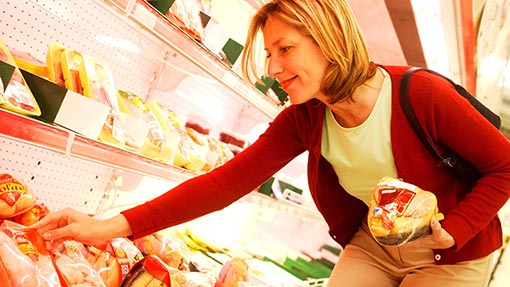First quarter FSA tests find 59% of poultry has campy

Results of Food Standards Agency (FSA) testing on chicken in shops has found 59% to be contaminated with campylobacter on carcasses. Of this total, 4% was found to have the bug on outer packaging.
Previous testing for campylobacter, the most commmon cause of food poisoning in humans, revealed slightly higher results pointing to a possible improvement. The most recent results prior to this new research indicated 65% of chicken at retail was contaminated.
NFU chief poultry adviser Gary Ford said such a slight decline was “disappointing”. “Farmers have been working hard on the ground to explore biosecurity measures, such as foot-dips, barriers, hand sanitizers and much more, as well as taking part in a number of trials which we hope will find ways to reduce the bacteria on-farm,” he added.
The latest testing was the first quarter of an ongoing 12-month survey into campylobacter on supermarket shelves, which began in February 2014. In total, 4,000 chickens will be tested both at the neck flap and on outer packaging. These first quarter results represent a sample of 853 birds.
FSA CAMPYLOBACTER RESULTS EXPLAINED | ||||
Results are in two parts: a figure for the contamination levels on each bird, taken from the neck flap, and expressed as cfu/g (colony forming units per gram), and contamination of the outside of the packaging. | ||||
NECK FLAP TEST RESULTS | ||||
<10 CFU/g | 10-99 CFU/g | 100-1000 CFU/g | >1000 CFU/g | Total sampled |
352 (41%) | 145 (17%) | 219 (26%) | 137 (16%) | 853 (100%) |
OUTER PACKAGING TESTS | ||||
<10 CFU/swab | 10-99 CFU/swab | 100-1000 CFU/swab | >1000 CFU/swab | Total sampled |
814 (95%) | 26 (3%) | 11 (1%) | 1 (0.12%) | 852 (99.88%) |
N.B. 10cfu/g is considered the limit of detection for campylobacter so only contamination found above that level can be confirmed as a positive. The <10 band includes negative results. | ||||
Originally, the FSA had intended to “name and shame” individual shops, but the industry expressed concerns that one quarter’s worth of data would not be representative, and could cause undue concerns over the safety of chicken with the public. Subsequently, the most recent FSA board meeting voted in favour of keeping results anonymous until the full survey had concluded.
A breakdown of the figures reveals 16% (137) of samples taken from individual chickens had campylobacter levels of 1,000 cfu/swab (see box, below) or more – the highest level of contamination measured. The FSA target is to reduce this figure to 10% by 2015. Of the 4% (39) birds found to have campylobacter on the outside of packaging, one had the highest level of contamination.
Catherine Brown, chief executive of the FSA, said: “The chicken supply chain is looking at how interventions such as improved biosecurity on farms, rapid surface chilling, and anti-microbial washes can help reduce campylobacter. So when they take action and invest in interventions designed to make a difference, these survey figures will enable us to see if they really do make an impact.
